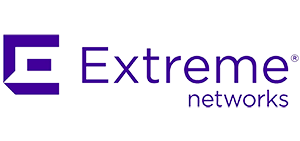WiFi
Wireless LANs enable users to establish and maintain a mobile network connection throughout or between buildings, without the limitations of wires or cables. Harmonix provides a family of wireless LAN products that combine the mobility and flexibility users want from a wireless LAN product with the throughput and security they demand from a business LAN.
Until recently, wireless local-area network (LAN) products were used primarily in certain vertical markets-such as retail, education, and healthcare-where mobile users with a need for LAN access were satisfied with data-transfer rates of 2 megabits per second (Mbps) or less. To make wireless LANs more “mainstream,” customers pressed vendors to develop a high-speed wireless LAN standard that would encourage interoperability, reduce prices, and provide the bandwidth needed by today’s business applications. In 1999 the IEEE ratified an extension to a previous standard. Called IEEE 802.11x, it defines the standard for wireless LAN products that operate at an Ethernet-like data rate up to 54 Mbps, a speed that makes wireless LAN technology viable in enterprises and other large organizations.
Advantages of this technology include:
Increased mobility within the enterprise, in addition to a traditional wired network
Flexibility for frequent LAN wiring changes, either throughout the site or in selected areas
Ideal for sites not conducive to LAN wiring because of building or budget limitations, such as older buildings, leased space, or temporary sites
Flexibility and cost savings by a line-of-sight, building-to-building bridge to avoid expensive trenches, leased lines, or right-of-way issues
Our Wireless LAN Specialists are recognized for their knowledge and expertise in building and maintaining end-to-end wireless network connections throughout or between buildings, without the limitations of wires or cables. These specialists focus on the enterprise and medium-sized business providing assessment, design and implementation services that combine the mobility and flexibility users want from a wireless LAN solution with the throughput and security users demand from a business LAN.
What is WiFi?
Wi-Fi is a wireless networking technology that allows devices such as computers (laptops and desktops), mobile devices (smart phones and wearables), and other equipment (printers and video cameras) to interface with the Internet. It allows these devices–and many more–to exchange information with one another, creating a network.
Internet connectivity occurs through a wireless router. When you access Wi-Fi, you are connecting to a wireless router that allows your Wi-Fi-compatible devices to interface with the Internet.
What does Wi-Fi mean?
Wi-Fi is not an acronym; it is a brand name created by a marketing firm that’s meant to serve as an interoperability seal for marketing efforts.
How does Wi-Fi work?
On the technical side, the IEEE 802.11 standard defines the protocols that enable communications with current Wi-Fi-enabled wireless devices, including wireless routers and wireless access points. Wireless access points support different IEEE standards.
Each standard is an amendment that was ratified over time. The standards operate on varying frequencies, deliver different bandwidth, and support different numbers of channels.
What is a wireless access point?
A wireless access point (AP) allows wireless devices to connect to the wireless network. Having a wireless network makes it easy to bring new devices online and provides flexible support to mobile workers.
What a wireless access point does for your network is similar to what an amplifier does for your home stereo. An access point takes the bandwidth coming from a router and stretches it so that many devices can go on the network from farther distances away. But a wireless access point does more than simply extend Wi-Fi. It can also give useful data about the devices on the network, provide proactive security, and serve many other practical purposes.
What is a mobile hotspot?
A mobile hotspot is a common feature on smartphones with both tethered and untethered connections. When you turn on your phone’s mobile hotspot, you share your wireless network connection with other devices that can then access the Internet.
What is portable Wi-Fi hotspot?
A portable Wi-Fi hotspot is a mobile hotspot obtained through a cell phone carrier. It’s a small device that uses cellular towers that broadcast high-speed 3G or 4G broadband signals. Multiple devices, like iPads and laptops, can then connect wirelessly to the device, which in turn seamlessly connects to the Internet where ever you travel. Similar to a cell phone, the portable hotspot’s monthly cost is based on the data usage plan you select. A portable Wi-Fi hotspot is a more reliable way to access the Internet than searching for static public Wi-Fi hotspots.
Wi-Fi Partners




